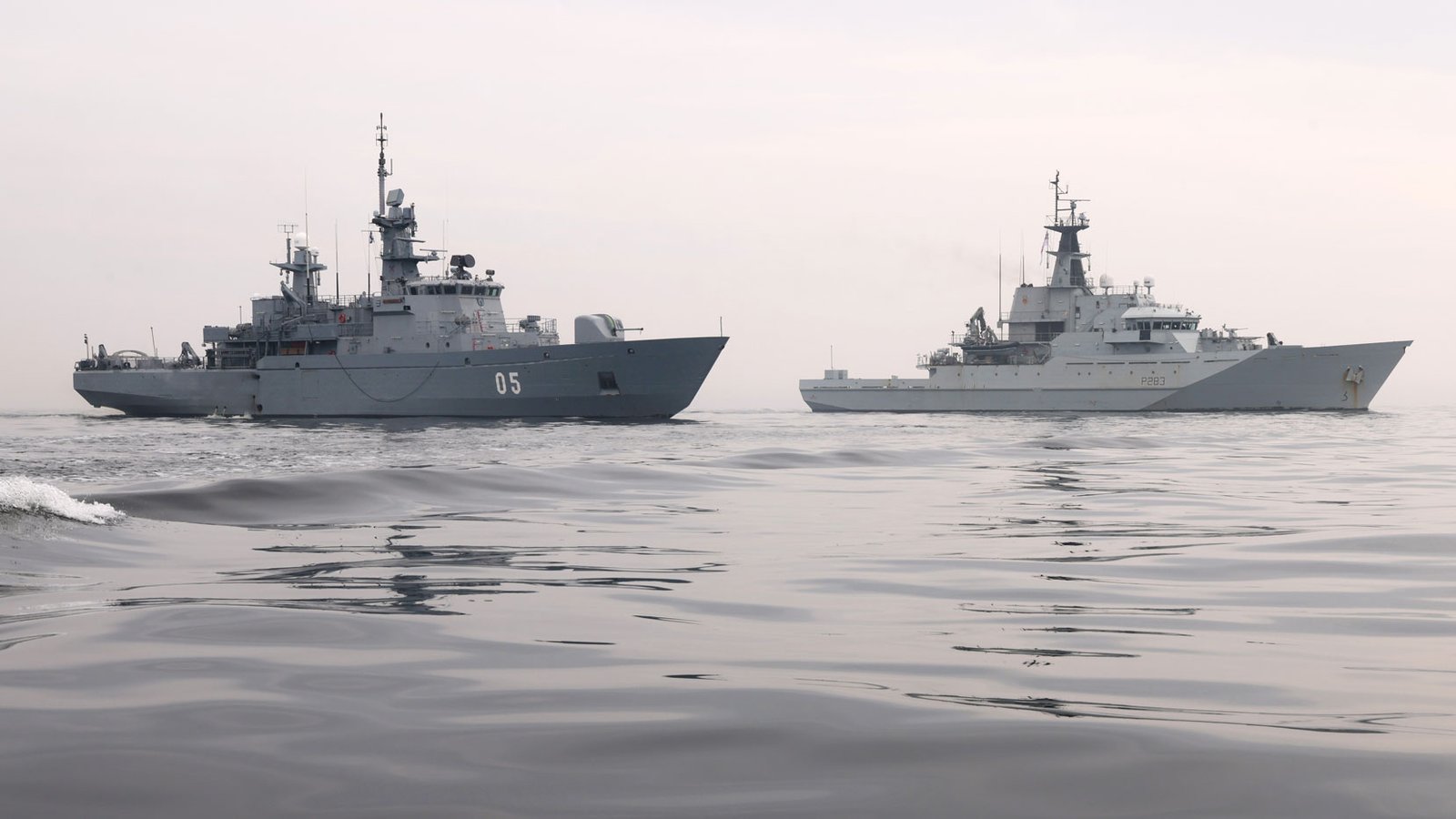Patrol ship HMS Mersey has been working with both RAF Typhoon interceptors and long-range maritime patrol aircraft in firsts for both the ship and the Royal Navy during the six-week long ‘Anglerfish’.
The operation reaffirms the Royal Navy’s capability when working as part of the Joint Expeditionary Force, a multinational defence framework complementary to NATO which is committed to EURO-Atlantic security with the Baltic region as one of its focus areas.
The Portsmouth-based warship has been operating in the Gulf of Finland with the Estonian Navy and RAF for the past week having already worked with Swedish and Finnish Navies.
In addition to Typhoons, the RAF also dispatched a P-8A Poseidon maritime patrol aircraft to waters off Estonia in a long-range mission (a round trip from its base at RAF Lossiemouth of more than 2,000 miles) and having established communication with HMS Mersey the two worked together to compile a complete picture of maritime activity in the region.
“The capabilities that Poseidon brings is impressive, especially on a foggy day like today when we struggle to identify shipping contacts,” said HMS Mersey’s Commanding Officer Lieutenant Commander James ‘Mitch’ Mitchell.
“Operating together we were able to generate a recognized maritime picture of activity across the Baltic Sea region and is another demonstration of our abilities to integrate and operate alongside partners and allies both under the JEF framework and as part of the NATO alliance.”
Wing Commander Ben Livesey, the Officer Commanding CXX Sqn and who flew on the sortie, added: “This was an excellent example of what the Poseidon can do… reassuring our Allies and cooperating closely with our Royal Navy colleagues at range.
“The ability to project our RAF Maritime Patrol capability into different areas like this allows us to better understand the battlespace, both above and below the waves, and this ability continues to grow as Poseidon builds towards Full Operational Capability. Despite the poor weather, we were able to achieve our mission objectives whilst conducting valuable training, which prepares us better for future challenges, whatever those may be.”
Mersey’s second interaction with the RAF came when hosting the head of the Estonian Navy, Commodore Yüri Saska. He joined the British ship for the last of three days of combined exercises off Tallinn with Estonian patrol vessel Kindral Kurvits.
For the final exercise, amid snow flurries which restricted visibility to barely half a mile at times, the Kurvits scoured the Gulf of Finland for ‘hostile’ shipping – played by Mersey, which refused all demands to comply, prompting the Estonians to call in an air ‘attack’ by the RAF, deployed to the country as part of a NATO air policing mission.
A jet from IX (Bomber) Squadron, 140 Expeditionary Air Wing, based at Ämari Air Base responded, making repeated low-level passes of the Royal Navy vessel in a show of force.
Lieutenant John Hawke, HMS Mersey’s gunnery officer, said the whole experience of the deployment had been hugely beneficial.
“There is a lot we can learn from the Baltic navies – they have different skillsets from us and they operate in a very different geo-political sphere,” he added.
Wing Commander Scott MacColl, the Commanding Officer of 140 Expeditionary Air Wing said: “This was an excellent opportunity for the UK and 140 EAW to demonstrate the flexibility and agility we can bring from a deployed location in Estonia. From an Air Policing posture, the team were able to seamlessly transition into a maritime role, reinforcing our excellent working relationship with Royal Navy units and other RAF capabilities. This versatility is key to interoperability with a wide range of Allies and Partners, and enhancing broader Baltic Security.”
The British Army and RAF have also been operating in Estonia, supporting regional security as part of NATO. The deployments by the Navy and RAF complement the British Army’s operation in Tapa, leading the NATO enhanced Forward Presence.
All three services’ activities in the Baltic are part of the UK contribution to NATO and the Alliance’s collective work to ensure security and stability in the region.
Operating together we were able to generate a recognised maritime picture of activity across the Baltic Sea region and is another demonstration of our abilities to integrate and operate alongside partners and allies

